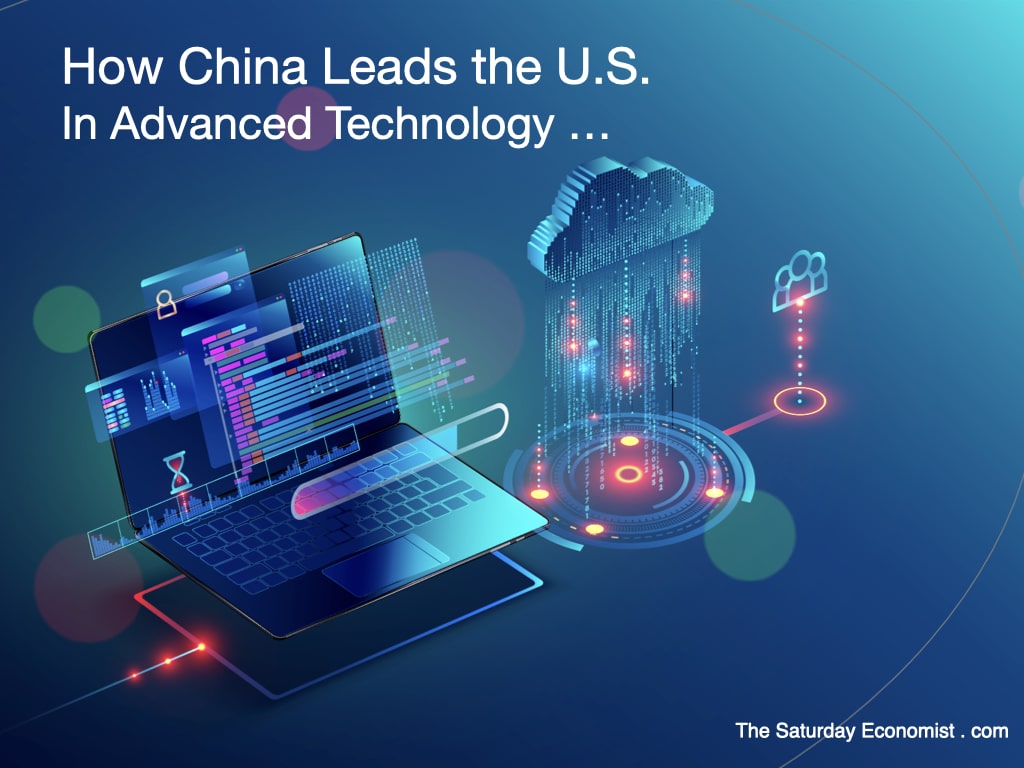|
China Leads the U.S. in Advanced Technology ...
More significantly research from the Australian Strategic Policy Institute suggests China leads the U.S. in technology, despite the restrictions on Huawei and the chip squeeze. ASPI claims China leads in 37 out of 44 key advanced technologies. Research reveals China has built the foundations to position itself as the world’s leading science and technology superpower, by establishing a stunning lead in high-impact research across the majority of critical and emerging technology domains. Western democracies it is argued, are losing the global technological competition, including the race for scientific and research breakthroughs and the ability to retain global talent. These are crucial ingredients that underpin the development and control of the world’s most important technologies, including those that don’t yet exist. China’s global lead extends to 37 out of 44 technologies that ASPI is tracking, covering a range of sectors spanning defence, space, robotics, energy, the environment, biotechnology, artificial intelligence (AI), advanced materials and key quantum technology areas. The Critical Technology Tracker shows that, for some technologies, all of the world’s top 10 leading research institutions are based in China and are collectively generating nine times more high-impact research papers than the second-ranked country, most often the U.S. The Chinese Academy of Sciences ranks highly (often first or second) across many of the 44 technologies included in the Critical Technology Tracker. ASPI sees China’s efforts being bolstered through talent and knowledge import. One-fifth of its high-impact papers are being authored by researchers with postgraduate training in a Five-Eyes country. Five Eyes Countries are Australia, Canada, New Zealand, the United Kingdom and the United States A key area in which China excels is defence and space-related technologies. China’s lead is the product of deliberate design and long-term policy planning, as repeatedly outlined by Xi Jinping and his predecessors. The ASPI dataset reveals there’s a large gap between China and the US, as the leading two countries, and everyone else. The US comes second in the majority of the 44 technologies examined in the Critical Technology Tracker. The US lead is confined to areas such as high performance computing, quantum computing and vaccines. Hope for the UK? The race to be the next most important technological powerhouse is a close one between the UK and India, both of which claim a place in the top five countries in 29 of the 44 technologies. South Korea and Germany follow closely behind. Could a bigger Brics bloc be a global match for the G7? The new members of the China-led group will add to its economic clout but that is unlikely to translate into political weight any time soon. Brazil has no intention of being drawn into an East West paradox. India still has significant territorial disputes with China. Russia will remain a pariah on the international stage following the invasion of Ukraine and South Africa would be loathe to accept engagement in the second partition of Africa by colonialist powers. Our hypothesis remains. China will overtake the U.S. as the largest economy in the world. It may just take a bit longer than we first thought. It may have to do it, with its own chips. Clearly it has the technology to achieve that, with or without the Taiwan Semiconductor Manufacturing Company.
0 Comments
Leave a Reply. |
The Saturday EconomistAuthorJohn Ashcroft publishes the Saturday Economist. Join the mailing list for updates on the UK and World Economy. Archives
July 2024
Categories
All
|
| The Saturday Economist |
The material is based upon information which we consider to be reliable but we do not represent that it is accurate or complete and it should not be relied upon as such. We accept no liability for errors, or omissions of opinion or fact. In particular, no reliance should be placed on the comments on trends in financial markets. The presentation should not be construed as the giving of investment advice.
|
The Saturday Economist, weekly updates on the UK economy.
Sign Up Now! Stay Up To Date! | Privacy Policy | Terms and Conditions | |

 RSS Feed
RSS Feed